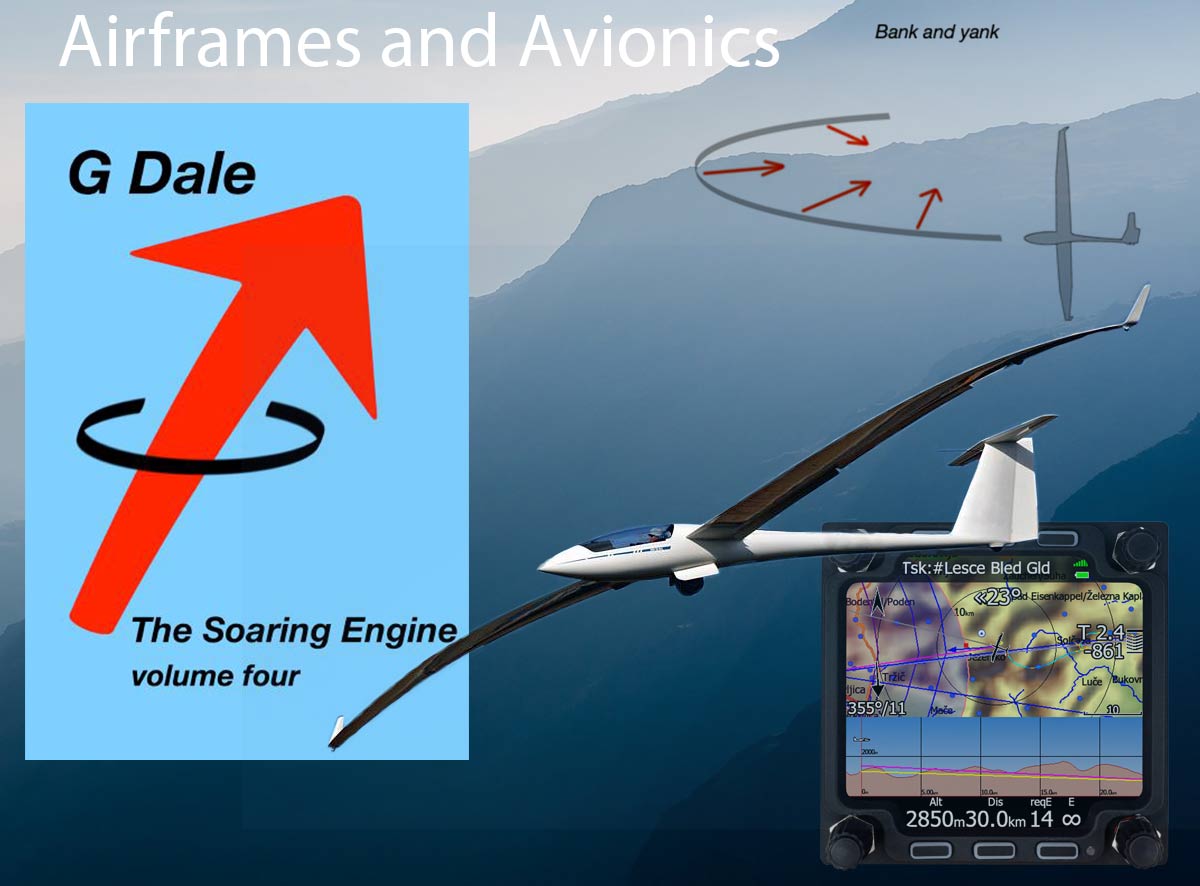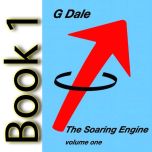The Soaring Engine Volume 4

I’ve spent most of the last thirty years flying cross country, competing, and teaching others to soar and race. I’ve been lucky enough to fly in lots of different places: in the USA from Mifflin, Sugarbush, Parowan, and Minden, all over Europe from Finland to Spain and as far east as Lithuania. I’ve worked in Australia, New Zealand, South Africa, and even Japan. Along the way, I’ve managed some reasonable distance flights and a few good results in the internationals. Lucky, lucky, lucky. And I’ve spent many dozens of seasons coaching: for the BGA, the GFA, GNZ, for Glide Omarama, and many individual gliding clubs. Again, lucky. On the other hand, I never made any money...hence:
The Soaring Engine Series!
In fact, it wasn’t designed as a money-making project, although given that there is no work in coaching right now a little income has been handy. I sat down to write the first book because I was frustrated at having to teach the same skills time and time again in the classroom. Don’t get me wrong, I love coaching and I can talk all day but there comes a point where one thinks “there must be an easier way...”
Volume Four Release May 2021
Volume four is on the starting blocks waiting for the gun: I’m doing the final proofs right now. It’s written and laid out in the same way but it isn’t about soaring. It’s all about the kit: the glider and the instruments. Those of you that have been obsessed with gliding forever might not see the point, because you already know your way around the equipment. I’ve owned, maintained, reworked, and tuned - in order - a Swallow, Ka6, Libelle, Jantar 1, Libelle again, ASW 17, ASW 24, DG100, ASW 24 (again) DG101, Libelle (yet again, but a Striefenader one this time) and now an ASW 24 (yes, again... sigh) and an ASH 25. I know what I’m doing by now. Many of you reading this will have a similar history. But what about the newcomers to gliding? Most beginners today have the means to purchase high-performance ships, but they don’t have the background or experience to operate them efficiently. Sometimes they don’t operate them safely either, which is a real problem. Through no fault of their own, mind: there is almost no training available for the ambitious 200-hour pilot who wants to fly an ASW 27, a DG 800, or a JS1. And all of those machines are much more difficult to operate and more inclined to bite their owners than a Ka6.
So volume four introduces high-performance sailplane technology and design from the pilot’s point of view, pointing out why the aircraft looks the way it does, what it is designed to do and how to operate it without making a fool of yourself. The text also tackles modern avionics: I’ve just refitted my racer with the very latest gear and I’ve had to work hard to get on top of it all, and there’s a lot in the book dedicated to that subject because even experienced pilots are not necessarily up to date with the latest stuff.
I had to add an appendix to cover principles of gliding flight and principles of variometry, so the beginner has some chance of finding his way around the more technical material in the main text. This might be useful to those of you that have lots of experience but need reference material for instructing or coaching.
So that’s volume four: out soon, watch this space. Meanwhile, there’s no peace for the wicked. I’m just about to start out on volume five, which will wrap up the whole Soaring Engine project with a text on learning to fly, from first flights to license and XC standard. Again, for both beginners and for instructors and coaches. Don’t hold your breath, because I need to go and do some flying now, having been locked down in the UK and grounded for far too long. Roll on summer.
Volume One
Volume one covers the basics of how the air moves around to give us lift, either in flat terrain or on ridges and in the mountains. Having found the lift it discusses how one might safely climb in it: this can be a trick in the mountains. It comes out of the time I spent coaching in the UK for the British Gliding Association, and to a lesser extent from the coaching I did at Glide Omarama and for the Gliding Federation of Australia. I would spend much of every week in front of the whiteboard: it’s a part of the job. So I because accustomed to talking about soaring. When you’re giving lectures it’s important to keep the information clear, concise, and to the point. Diagrams must be simple, uncluttered, with a coherent house style. You must teach from the known to the unknown, from the simple to the complex, the easy to the difficult, with lots of repetition along the way to get the ideas across. And crucially, not only must you know what you’re talking about but you must also understand why the audience doesn’t necessarily get it the first time. Fortunately, pilots all tend to make the same mistakes and they mostly find the same things difficult, so with the experience I’ve had, it wasn’t too hard to find the right crux points to focus on.
Volume Two
Volume two is essentially more of the same: looking closely at how the air moves around but this time in the special circumstances of Wave and Convergence systems. I was able to fly sixteen seasons for Glide Omarama and the soaring conditions there rely heavily on convergence and wave: at the same time, I was able to fly in the French Alps, in the Pyrenees, and in the Sierras, so that gave me a wider perspective. Volume two is a bit of a specialist book, and a flatland pilot in a temperate task area might think it’s not relevant but the reality is that convergences and wave abound everywhere: they are just hard to recognise unless they are particularly strong and discrete.
Volume Three
Volume three was born from coaching in Australia at Narromine and from flying international competitions. I’ve spent some time doing one-on-one coaching sessions, focussing on flatland speed flying skills: this was a good discipline for my competition flying. Of course, the heart of competition flying is not the soaring, believe it or not. Yes, you have to be a good soaring pilot to fly in a world gliding championship and get anywhere at all, but that’s just entry-level stuff. It is hard work to practise to get good at it but it is, in the end, just application. The key is strategic flying, gaggle flying, and team flying. In “Winning on the Wind” George Moffat says “alone is slow” and he’s right. Just remember this: it isn’t about being a great glider pilot, it’s about getting more points than everyone else at the moment the director ends the competition. This is hard to practise and to learn by yourself, easier to pick it up when you’re flying in the competitions for real, but you have to do a lot of them to get the message. Or, at least, I had to. This style of flying and level of commitment isn’t for everyone, but the knowledge and skills required trickle down into club-level flying if you’ll just take time to see what it’s all about.








